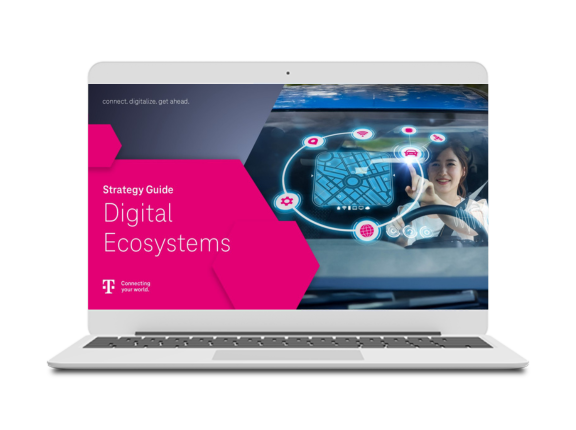

Smart Building Management with IoT
Get more information
Use case: As a building manager, you need to optimise the consumption of electricity, gas, heating oil, heat, and water to cut costs and reduce the CO2 emissions of your building portfolio.
Challenge: Rising energy prices increase the operating costs of buildings. Large companies must comply with legal regulations on energy efficiency. The use of self-generated electricity (for example from photovoltaic systems) must be optimised.
Solution: Easy-to-install retrofit sensors measure the consumption of electricity, water, gas, and heat and display the building energy flows in real time. They provide information about anomalies in the use of energy, enabling causes to be analysed. They also create forecasts for future energy requirements.
Your benefits: Our solution provides transparency in energy consumption enabling usage, cost, and sustainability optimization.

Use case: Operating costs can include many constituent costs, such as energy, cleaning, maintenance, or building insurance. The correct allocation and recording of all these costs is complex.
Challenge: Collecting, recording, and managing data on operating costs requires an efficient system to ensure that all relevant information is captured. Building managers need to ensure that operating costs are allocated transparently and fairly to the tenants or users of the building.
Solution: IoT sensors collect consumption data for resources such as electricity, water, and gas. This data is then processed in real time, centralised and standardised, and made available in the cloud.
Your benefits: Operating costs are available in real time in a format that can be easily integrated into commercial systems. Data analyses make it possible to forecast the development of operating costs in the future.

Use case: Building automation enables one to control technical building equipment (TGA) automatically. For example, it integrates heating, ventilation, air conditioning, lighting, and shading into a comprehensive smart system.
Challenge: IoT-based building automation can increase user comfort, can reduce energy expenditure, and operating costs. However, installed technical systems are often not compatible with each other. In addition, the technical knowledge required to install building automation is often scarce.
Solution: A data hub, in the cloud and within programming interfaces, allows different building automation solutions to be combined into a coherent comprehensive system. Our experts use their experience to help you design the system.
Your benefits: Transparent control of technical facilities in buildings increases convenience for your customers and reduces your costs.
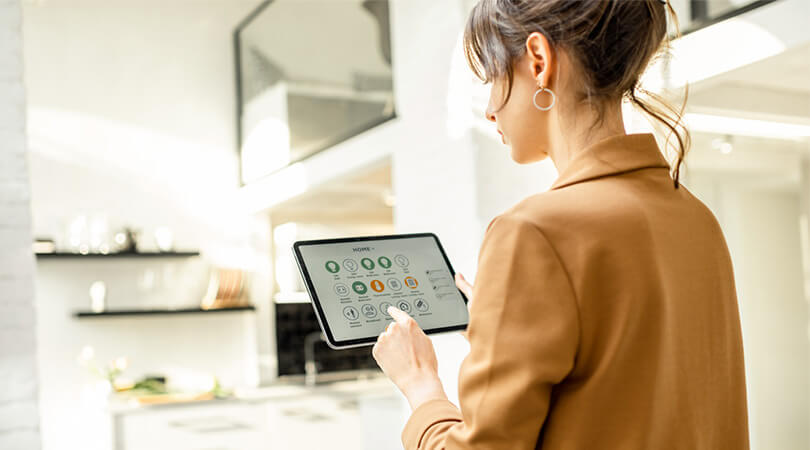
Use case: Lighting solutions should help to improve the energy efficiency of buildings, increase user comfort, reduce operating costs, and reduce light smog.
Challenge: Selecting energy-efficient lighting solutions that keep operating costs low can be a challenge. It is also important to adapt lighting to specific requirements and activities in different areas of a building to maximise occupant comfort and productivity.
Solution: IoT solutions can automatically switch on lighting when someone enters a room and switch it off when the room is empty. They are also able to measure the amount of daylight to adjust indoor and outdoor lighting accordingly, drastically reducing energy consumption.
Your benefits: IoT-controlled lighting enables efficient use of energy and adapts to the needs and individual preferences of users. This increases their comfort and satisfaction.

Use case: As a building manager, you need to optimise the use of available space. You design rooms and spaces efficiently and appropriately to fulfil the needs and requirements of users and avoid vacancies.
Challenge: New ways of working such as New Work, Hybrid Work, and Desk Sharing require digital systems to plan utilisation. Low or uneven utilisation of space leads to increased property costs.
Solution: Our solutions display the building and its premises graphically as a digital twin along with up-to-date occupancy information. Real-time data enables one to analyse and optimise the use of the building and the design of the space.
Your benefits: The transparency of building utilisation increases employee satisfaction as needs-based space availability is facilitated along with simple, efficient room booking. Optimised space utilisation reduces property costs.

Use case: Building managers must maintain the functionality of residential and commercial properties. Damage to systems and the building fabric must be recognised as early as possible and hazards for visitors and residents must be ruled out.
Challenge: Building managers often receive information about damage to the building fabric and facilities when it is already too late. This results in costly damage. Leaks, for example, often cause major water damage before they are identified. Open windows and doors allow rain to enter buildings and pose safety risks.
Solution: An IoT-based building management system monitors the pressure in pipe systems and the condition of windows and doors. Anomalies are detected as early as possible, and warnings are sent to the responsible personnel. In this way, you protect your property portfolio from massive damage, for example due to cookers being left on or leaks in pipe systems. Sensors in door and window frames indicate open doors and windows.
Your benefits: Damage is recognised quickly, preserving property value and reducing repair costs. The safety of everyone in the building is increased.

Use case: Cleaners play a crucial role in building management as they are responsible for the cleanliness, hygiene, and “perceived” condition of buildings.
Challenge: As part of usual frequent cleaning, cleaning staff maintain the cleanliness of rooms that have not been used since they were last cleaned. By contrast, heavily used rooms may be cleaned too infrequently. This not only causes unnecessary costs but is unsustainable as it unnecessarily increases energy consumption and the consumption of water and cleaning agents.
Solution: We offer a cost-effective end-to-end solution for optimising building cleaning and its management processes. Smart Cleaning automatically identifies cleaning tasks in buildings. IoT sensor technology determines the degree of utilisation and commissions and logs when rooms are cleaned. Smart Cleaning also provides data on future cleaning requirements and the utilisation of cleaning tours.
Your benefits: A customised cleaning framework and regular quality checks increase customer satisfaction. Fixed visual inspections and static service specifications are no longer necessary as these are replaced by needs-based cleaning tasks. The perceived cleanliness of your property is increased.

Use case: Building access control should ensure the safety of users and residents, prevent theft and damage to property, protect the privacy of residents, and secure the business secrets of companies.
Challenge: Issuing and managing keys is time-consuming. If a key is lost, many locks often need to be replaced. Access is also not logged. In addition, security personnel are a significant cost.
Solution: RFID chips, light bars, smart door locks, and motion detectors manage flexible and automated access to buildings. They also grant selective access, log who was in which building and when, and enable absolute transparency. In the event of unauthorised access, they automatically inform the security service.
Your benefits: IoT solutions improve security, create transparency, increase convenience for users and visitors, and can also save costs for security staff.

Use case: Hazardous situations must be recognised quickly so that protective measures such as evacuation can be initiated early and in an orderly manner.
Challenge: Building managers must ensure that the building complies with the applicable safety and fire protection regulations and standards. This requires safety equipment such as smoke detectors to be regularly inspected and maintained to function properly.
Solution: Smoke detectors, networked via mobile communications with a ten-year battery life, carry out regular self-tests and remote maintenance routines and document data in the cloud. In the event of dangerous conditions, they not only emit a warning signal, but also send messages to smartphones and automatically inform the security service.
Your benefits: Compliance with legal regulations is guaranteed and the protection of occupants and facilities is increased.
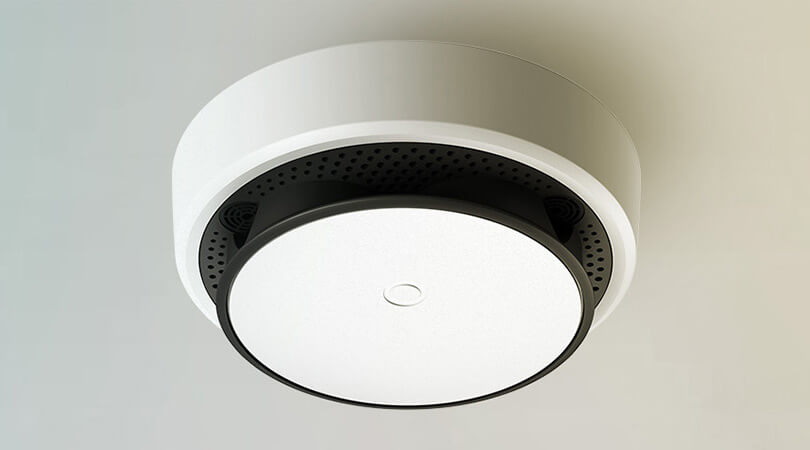
Use case: A pleasant and healthy indoor climate is crucial for the satisfaction of users and occupants. It increases the motivation of employees in offices and increases the time spent in shops.
Challenge: Building managers lack data on the indoor climate in buildings, such as temperature, humidity, CO2, and radon levels. If the climate in a building is poor, managers usually only find out through customer or user complaints.
Solution: Sensors determine the quality of the indoor air in real time. This data can be used to control ventilation, limit the number of occupants using access controls and can improve space utilisation plans.
Your benefits: Our solutions create a pleasant indoor climate that increases customer satisfaction and has a positive impact on employee performance.

Use case: Digital advertising (digital signage) combines the advantages of an information system with use as a target group-orientated advertising space. These generally include electronic posters, electronic traffic signs, advertising in shops, digital door signage, or large-screen projections in indoor and outdoor areas.
Challenge: The aim of digital advertising in smart buildings is to generate new sales through advertising, to reach visitors more vividly and with more content, and to utilise the added value of information, for example through site plans.
Solution: Screens and other playout devices are remotely fed with content from a CM system in a manner that is cost-effective and always up-to-date.
Your benefits: Less manual effort (no more sticking up posters) and higher visitor acceptance due to the appeal of the content. Placement of location-oriented and target-group-orientated advertising where it is best perceived.
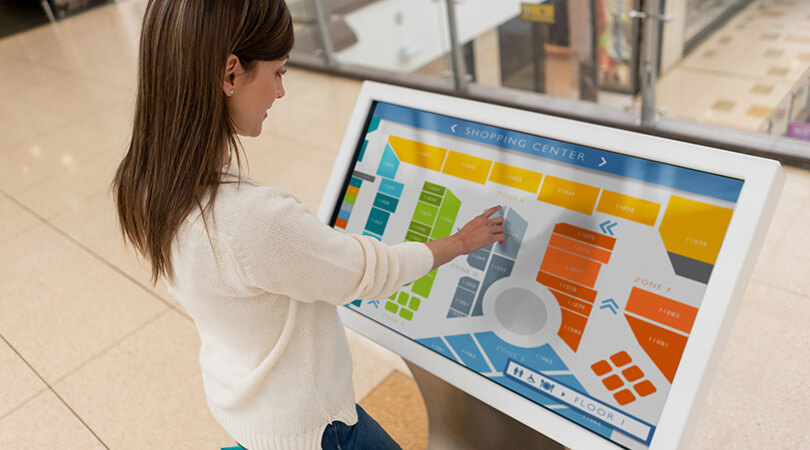
Use case: Burglary protection increases the security of buildings and company assets (including tangible and intangible assets). Criminals are effectively deterred and offences are detected early. After a break-in, video recording accelerates the investigation of the crime.
Challenge: Theft and burglary result in high losses due to the loss of goods, information, and valuables, as well as damage to equipment. In addition, insurance companies require effective protection against burglary and theft before they will compensate for the damage caused.
Solution: Micro-tags, barcodes, contact sensors on doors and windows, and motion sensors detect unauthorised access, the opening of doors and windows, and other suspicious activities.
Your benefits: Our solutions enable many different dangers to be detected proactively and automatically with just a few system components.

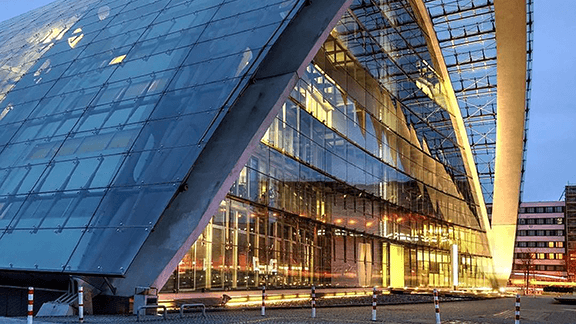
A smart building leverages modern technologies to enhance efficiency, comfort, safety, and sustainability. Typically incorporating the Internet of Things (IoT), automation, and digital controls, it is equipped with networked sensors that can be retrofitted. These sensors measure room temperature or energy consumption, transmitting the data wirelessly to the cloud for processing and analysis. This process enables the automatic control of heating, ventilation, air conditioning (HVAC), lighting, security systems, and energy consumption. Moreover, the collected data empowers property owners and building managers to optimize usage, enhance management practices, and make informed economic decisions.
A smart building integrates various technologies to optimize operations, enhance energy efficiency, and improve user comfort. Key components of a smart building solution include:
Cloud platform: This service offers infrastructure, storage, computing power, and diverse Internet-based services. It enables companies to use, manage and run software solutions without the need for the necessary physical IT infrastructure on site. For instance, Deutsche Telekom's Cloud of Things collects and analyzes real-time sensor data. Your personal web portal allows you to monitor measured values such as temperature, humidity, or water consumption, along with industry-specific analysis solutions to gain insights and trigger actions.
Sensors and actuators: Smart buildings utilize sensors to collect data on different aspects of the building and its surroundings, such as temperature, humidity, light, or motion. Continuously collecting data, these sensors transmit information to a cloud platform in real-time. Actuators execute commands from the cloud, adjusting services like lighting, windows, or air conditioning to make existing building systems “smart.”
Connectivity: Sensors and actuators require a reliable connection to transmit data to the cloud. Secure mobile radio and LPWAN technologies provide flexibility not afforded by technologies like WLAN. Deutsche Telekom offers wireless networks based on 2G, 4G, 5G, LTE-M, and Narrowband (NB)-IoT. For example, a basement vault sensor measuring water consumption can be connected via NB-IoT, ensuring maximum building penetration. Conversely, surveillance cameras can utilize 5G for the highest bandwidth.
The term “smart home” refers to the digitalization of private residences, focusing solely on the technical building equipment (TBE) within individual households. In smart homes, building automation manages functions such as lighting, shading, heating, multimedia systems, household appliances, and security technology.
In contrast, the term “smart building” encompasses functional or non-residential structures such as office complexes, airports, shopping centers, hospitals, educational facilities, or industrial plants. In smart buildings, key aspects such as air conditioning, fire protection, security, and energy consumption are optimized or automated through intelligent technology. This optimization aims to simplify building operations, reduce costs and emissions, and improve user comfort.
The terms "smart building" and "building automation" are often used interchangeably, but they have distinct meanings:
Building automation: Building automation involves the automatic control and monitoring of building functions. This includes integrating TBE such as heating, ventilation, air conditioning, lighting, and shading into an intelligent overall system. Transparent control of building equipment enhances customer comfort and reduces operational costs.
Smart building: A smart building goes beyond building automation. Its objective is not only to control individual systems but also to use data to optimize overall building use and efficiency. By incorporating data on room utilization, environmental conditions, and energy consumption, a smart building employs artificial intelligence to generate analyses and forecasts. It calculates real-time operating costs for the entire building stock, enabling property owners and building managers to identify optimization potential and enhance the sustainability of managed properties. The focus is on leveraging data to make informed decisions for the holistic improvement of building performance.
Smart building solutions play a significant role in increasing energy efficiency through various technologies and strategies. The primary objective is to lower energy costs and reduce CO2 emissions in a building portfolio. Here are examples of how smart building solutions achieve this:
- Automatic lighting control: Smart buildings use lighting sensors to measure natural light levels in rooms. Based on this information and room activity, the system automatically adjusts lighting intensity. Presence sensors ensure lights are switched off in unoccupied rooms, minimizing unnecessary energy consumption.
- Intelligent HVAC systems: Smart thermostats and HVAC systems utilize sensors to monitor room temperature. They automatically adjust heating or cooling to optimize comfort and minimize energy consumption. Zone control allows temperature adjustments in different building areas based on usage and user preferences.
- Energy management systems: These systems monitor overall energy consumption and analyze historical data to identify trends and anomalies. Real-time information is used to optimize energy consumption and maximize the use of self-generated electricity, such as from photovoltaic systems.
- Smart windows and shading systems: Automated windows and shading systems respond to daylight levels and weather conditions. They maximize natural light entry, reducing the need for artificial lighting and cooling.
- Real-time feedback: Users receive immediate feedback on energy consumption, enabling them to adjust their behavior for greater energy efficiency. This increased awareness encourages users to actively contribute to energy efficiency by using energy more consciously.
- Predictive maintenance: Smart building systems utilize sensor data to monitor device and system conditions. Predictive maintenance identifies potential problems early, preventing inefficient operation or breakdowns. Anomalies in consumption patterns can also indicate early signs of damage, such as a sudden increase in water consumption signaling a potential burst pipe.
- Gebäudeauslastung und -nutzung: Smart-Building-Lösungen können Echtzeitdaten zur Belegung von Büroflächen sammeln. Diese ermöglichen es, die Nutzung von Flächen zu optimieren, um Heizkosten zu senken. So können zum Beispiel während einer Urlaubsaison die genutzten Arbeitsplätze in einem Stockwerk zusammengelegt werden, um die Heizung in ungenutzten Stockwerken herunterzufahren.
- Building occupancy and utilization: Real-time data on office space occupancy enables the optimization of space usage, reducing heating costs. For instance, during vacation seasons, workstations on a floor can be consolidated, allowing heating to be reduced on unused floors.
The combination of these technologies and strategies allows smart building solutions to optimize energy consumption, enhance resource efficiency, and maximize user comfort simultaneously.
The planning of smart buildings involves various challenges that must be carefully addressed to ensure successful implementation.
- Interoperability: Smart buildings often incorporate a variety of technologies and devices from different manufacturers. The challenge is to ensure seamless communication between these systems. Deutsche Telekom offers a portfolio of certified devices to eliminate the need for lengthy adjustments, ensuring a quick start to your project. Our T IoT Hub serves as a connector and translator, facilitating communication between systems from various manufacturers. It also provides application programming interfaces (APIs) to orchestrate a wide range of IoT connectivity and device management platforms.
- Security and data protection: Smart buildings must implement robust security measures to prevent unauthorized access, data leaks, and other threats. Mobile radio is an ideal choice for networking in IoT projects due to its extremely secure connectivity. Deutsche Telekom, internationally recognized as a leading provider of cybersecurity, stores all data in highly secure data centers located in Germany. From the SIM card to application servers, comprehensive security mechanisms are in place.
- Complexity of integration: Integrating different systems, sensors, and actuators requires careful planning and execution. Telekom provides hardware, connectivity, and platforms from a single source, reducing the number of contact persons. This ensures smooth interaction between all components and guarantees a quick start to your project. Additionally, our support extends beyond technical implementation to include assistance with the development of a business plan.
Our consultants are dedicated to helping you clearly articulate challenges and develop innovative ideas. They provide guidance throughout the entire project, from the initial kick-off to the practical application.
There are compelling reasons why you might consider a smart building solution from Deutsche Telekom:
- Comprehensive expertise: Deutsche Telekom boasts unparalleled experience in addressing both individual and complex requirements. With the expertise of 2,000 developers and a track record of successfully implementing dozens of IoT projects, we ensure the success of your project.
- Highest security: Renowned for our pioneering role in security and data protection, Deutsche Telekom is internationally recognized as a top-tier cybersecurity provider. We adhere to the highest security standards to safeguard networks, cloud solutions, and IoT devices from hacker attacks. Regular Group-wide privacy and security assessments guarantee the integration of data security and data protection into system and product development.
- Best connectivity: Mobile communications is at the core of Deutsche Telekom's business. Our award-winning networks guarantee reliable reception for critical building technology applications, such as alarm and fire protection, both within Germany and internationally.
- Reliable partners: We foster long-term partnerships, ensuring that our collaborators are leading providers in their respective industries. This commitment to reliability ensures the optimal implementation of your projects.
- Customized solutions: With extensive experience in integrating various technologies, systems, and processes, we offer tailored solutions. Through solution orchestration tools like the IoT Hub, we seamlessly integrate applications into your systems and processes, creating solutions perfectly aligned with your specific use case.
Do you have any questions? Do not hesitate to contact us.


